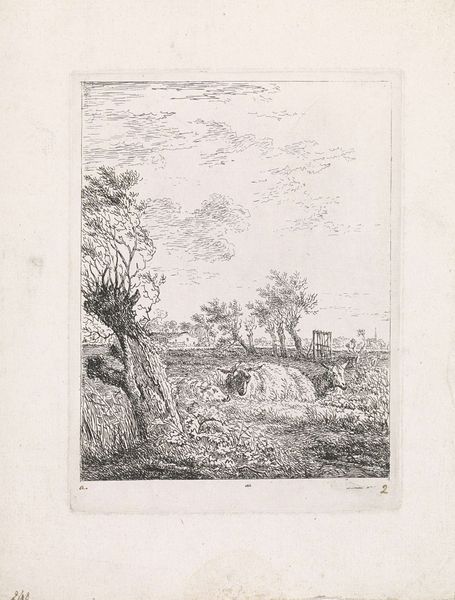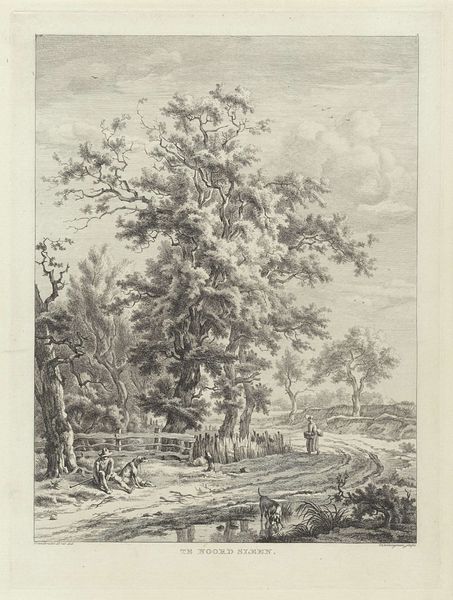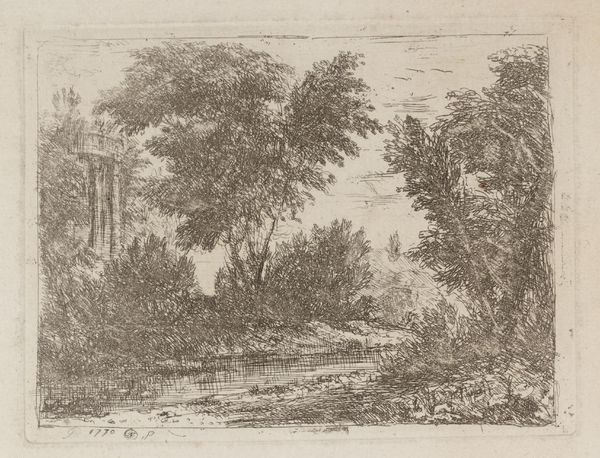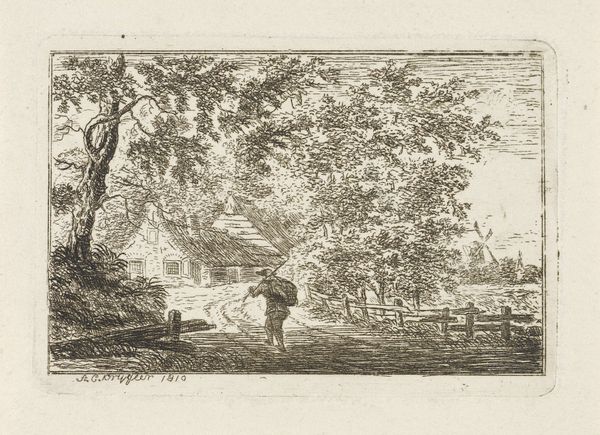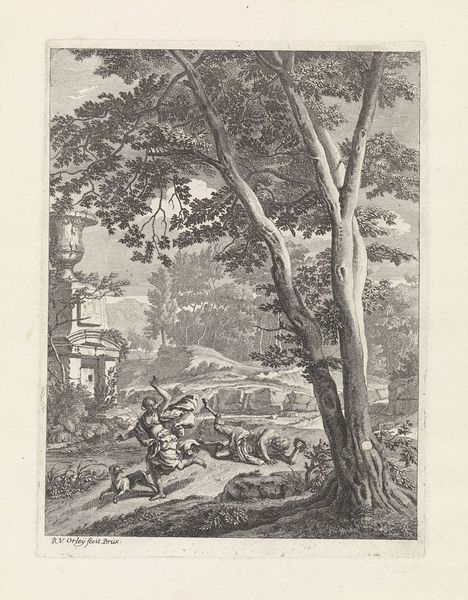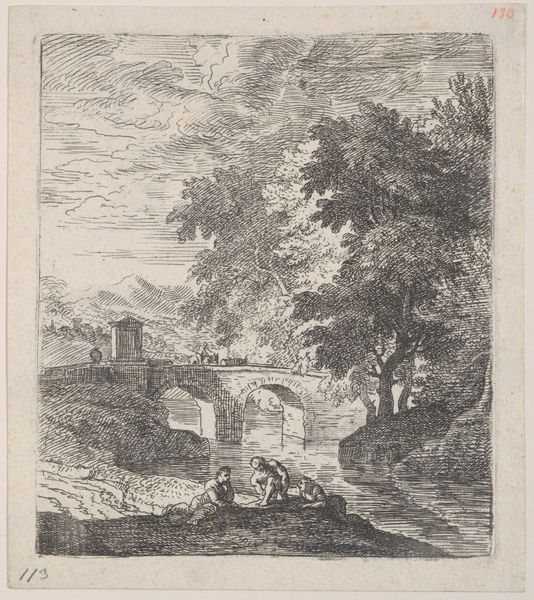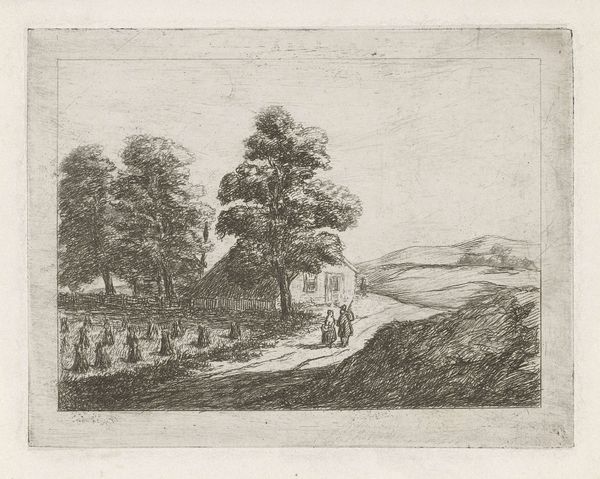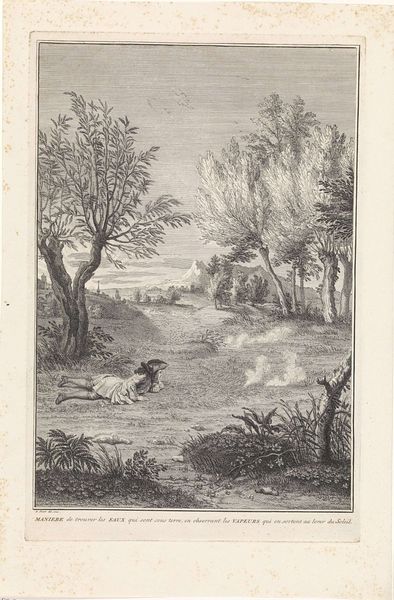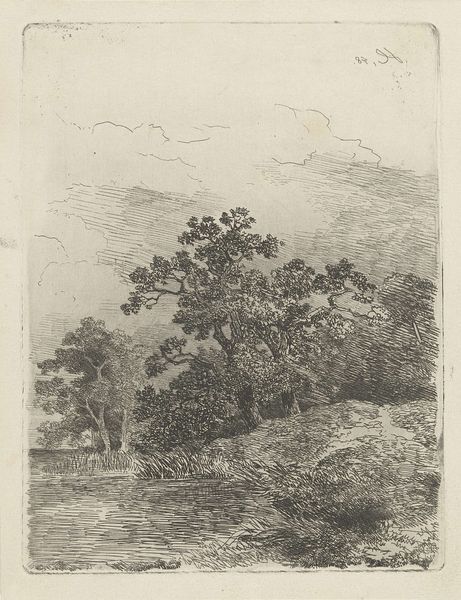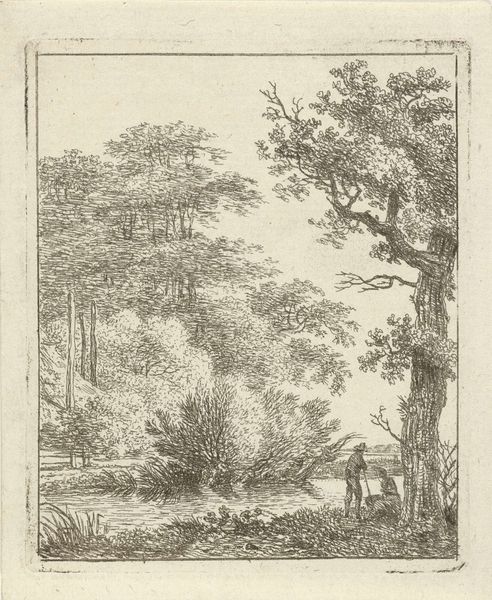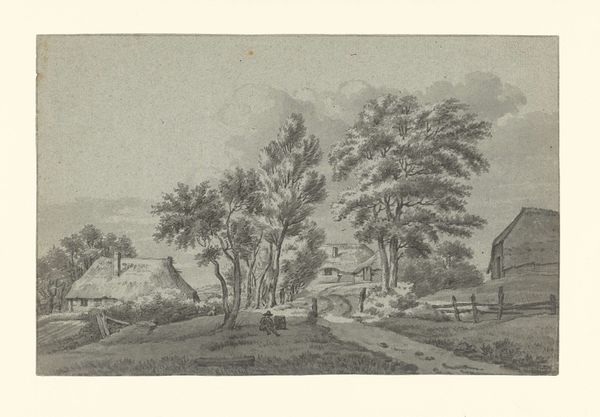
Dimensions: height 182 mm, width 141 mm
Copyright: Rijks Museum: Open Domain
Alexander Schaepkens made this etching of the bridge over the Jeker in Maastricht. An etching is made by using acid to cut into a metal plate, which is then inked and printed. The material quality of an etching is very distinct. The fineness of the etched line allows for a wealth of detail, here seen in the landscape and figures crossing the bridge. But it also takes a lot of labour. The process of etching involves careful preparation of the plate, precise drawing, and the skilled use of acids. This print is inscribed "1er etat", meaning that it is a first proof, before the artist made any revisions to the image on the plate. This gives us an insight into the artistic process, and the work involved in creating the final image. Thinking about the means by which prints are made, and the labour that they represent, is key to understanding their significance, and to acknowledging the complex histories of both craft and art.
Comments
No comments
Be the first to comment and join the conversation on the ultimate creative platform.

